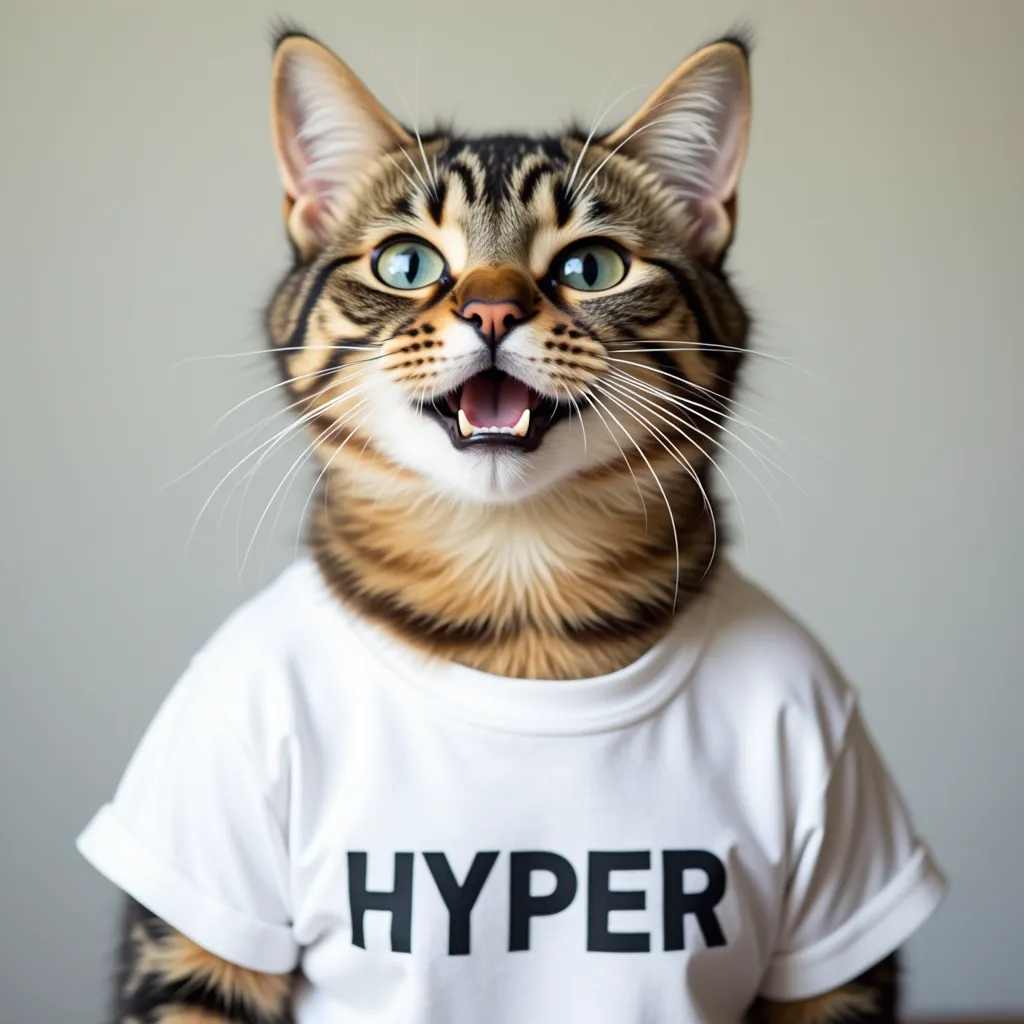hyper-flux-16step
Maintainer: lucataco

12

| Property | Value |
|---|---|
| Run this model | Run on Replicate |
| API spec | View on Replicate |
| Github link | View on Github |
| Paper link | View on Arxiv |
Create account to get full access
Model overview
hyper-flux-16step is a 16-step version of the Hyper FLUX LoRA model developed by ByteDance. It is an implementation of the ByteDance/Hyper-SD FLUX.1-dev 8-step model as a Cog model by lucataco. Similar models include the Hyper FLUX 8-step LoRA, SDXL-Lightning by ByteDance, and various other FLUX.1-Dev and FLUX.1-Schnell LoRA explorers by lucataco.
Model inputs and outputs
This model takes a text prompt as input and generates an image based on that prompt. The key inputs include the prompt, aspect ratio, number of outputs, guidance scale, and number of inference steps. The output is an array of image URLs.
Inputs
- Prompt: The text prompt describing the image to generate
- Aspect Ratio: The aspect ratio of the generated image, with options for 1:1, 16:9, 4:3, and custom
- Num Outputs: The number of images to generate (up to 4)
- Guidance Scale: The guidance scale for the diffusion process (0-10)
- Num Inference Steps: The number of inference steps (1-30)
Outputs
- Array of Image URLs: The generated images as an array of URLs
Capabilities
The hyper-flux-16step model can generate high-quality images from text prompts, with a focus on photorealistic styles. It is particularly adept at rendering detailed scenes, objects, and characters. The increased number of inference steps compared to the 8-step version allows for more refined and detailed outputs.
What can I use it for?
The hyper-flux-16step model can be useful for a variety of creative and commercial applications, such as:
- Generating concept art or illustrations for games, films, or books
- Creating product visualizations or marketing imagery
- Exploring creative ideas and inspirations through text-to-image generation
Things to try
One interesting thing to try with the hyper-flux-16step model is experimenting with different guidance scale settings. Increasing the guidance scale can result in more detailed and faithful renderings of the prompt, while lower values can produce more abstract or stylized outputs. You can also try combining this model with other text-to-image models, such as SDXL-Lightning, to explore different artistic styles and approaches.
This summary was produced with help from an AI and may contain inaccuracies - check out the links to read the original source documents!
Related Models

hyper-flux-8step

555
The hyper-flux-8step is a text-to-image AI model developed by ByteDance, the creators of TikTok. It is an implementation of the ByteDance/Hyper-SD FLUX.1-dev 8-step model as a Cog model. The model is capable of generating high-quality images from text prompts in 8 steps, using a technique called LoRA (Low-Rank Adaptation). This model is similar to other ByteDance text-to-image models like sdxl-lightning-4step and the FLUX.1-Dev LoRA explorer developed by lucataco. Model inputs and outputs The hyper-flux-8step model takes a text prompt as the main input and generates one or more images in response. The model supports additional inputs like seed, aspect ratio, number of outputs, and guidance scale to control the generation process. Inputs Prompt**: The text prompt that describes the desired image. Seed**: A random seed value to ensure reproducible generation. Width**: The width of the generated image (only used when aspect_ratio is set to "custom"). Height**: The height of the generated image (only used when aspect_ratio is set to "custom"). Num Outputs**: The number of images to generate (up to 4). Aspect Ratio**: The aspect ratio of the generated image, which can be set to a predefined value or "custom". Guidance Scale**: The guidance scale for the diffusion process, which controls the trade-off between image quality and faithfulness to the prompt. Num Inference Steps**: The number of inference steps to perform during the generation process. Output Format**: The format of the output images (e.g., WEBP, PNG). Output Quality**: The quality of the output images (0-100). Disable Safety Checker**: An option to disable the safety checker for the generated images. Outputs The model outputs one or more images in the requested format (e.g., WEBP, PNG) that match the given text prompt. Capabilities The hyper-flux-8step model is capable of generating a wide variety of photorealistic images from text prompts, including scenes, objects, and characters. The model leverages the power of LoRA (Low-Rank Adaptation) to achieve high-quality results in 8 inference steps, which is faster than traditional text-to-image models. What can I use it for? The hyper-flux-8step model can be used for a variety of applications, such as: Content Creation**: Generate images for blog posts, social media, or other digital content. Prototyping and Visualization**: Create visual concepts and ideas quickly from text descriptions. Creative Exploration**: Experiment with different prompts to generate unique and unexpected images. Personalized Products**: Generate custom images for merchandise, gifts, or personalized items. lucataco, the maintainer of this model, has also developed other LoRA-based models like the FLUX.1-Dev Multi LoRA Explorer and the FLUX.1-Schnell LoRA explorer, which may be of interest for those looking to explore the capabilities of LoRA-based text-to-image models. Things to try One interesting aspect of the hyper-flux-8step model is its ability to generate images with specific design elements, such as text or graphics printed on clothing or other objects. You could try prompts that incorporate these types of details to see the model's capabilities in this area. Additionally, experimenting with different aspect ratios and output sizes can yield unique and unexpected results.
Updated Invalid Date

sdxl-lightning-4step

412.2K
sdxl-lightning-4step is a fast text-to-image model developed by ByteDance that can generate high-quality images in just 4 steps. It is similar to other fast diffusion models like AnimateDiff-Lightning and Instant-ID MultiControlNet, which also aim to speed up the image generation process. Unlike the original Stable Diffusion model, these fast models sacrifice some flexibility and control to achieve faster generation times. Model inputs and outputs The sdxl-lightning-4step model takes in a text prompt and various parameters to control the output image, such as the width, height, number of images, and guidance scale. The model can output up to 4 images at a time, with a recommended image size of 1024x1024 or 1280x1280 pixels. Inputs Prompt**: The text prompt describing the desired image Negative prompt**: A prompt that describes what the model should not generate Width**: The width of the output image Height**: The height of the output image Num outputs**: The number of images to generate (up to 4) Scheduler**: The algorithm used to sample the latent space Guidance scale**: The scale for classifier-free guidance, which controls the trade-off between fidelity to the prompt and sample diversity Num inference steps**: The number of denoising steps, with 4 recommended for best results Seed**: A random seed to control the output image Outputs Image(s)**: One or more images generated based on the input prompt and parameters Capabilities The sdxl-lightning-4step model is capable of generating a wide variety of images based on text prompts, from realistic scenes to imaginative and creative compositions. The model's 4-step generation process allows it to produce high-quality results quickly, making it suitable for applications that require fast image generation. What can I use it for? The sdxl-lightning-4step model could be useful for applications that need to generate images in real-time, such as video game asset generation, interactive storytelling, or augmented reality experiences. Businesses could also use the model to quickly generate product visualization, marketing imagery, or custom artwork based on client prompts. Creatives may find the model helpful for ideation, concept development, or rapid prototyping. Things to try One interesting thing to try with the sdxl-lightning-4step model is to experiment with the guidance scale parameter. By adjusting the guidance scale, you can control the balance between fidelity to the prompt and diversity of the output. Lower guidance scales may result in more unexpected and imaginative images, while higher scales will produce outputs that are closer to the specified prompt.
Updated Invalid Date

flux-dev-lora

1.2K
The flux-dev-lora model is a FLUX.1-Dev LoRA explorer created by replicate/lucataco. This model is an implementation of the black-forest-labs/FLUX.1-schnell model as a Cog model. The flux-dev-lora model shares similarities with other LoRA-based models like ssd-lora-inference, fad_v0_lora, open-dalle-1.1-lora, and lora, all of which focus on leveraging LoRA technology for improved inference performance. Model inputs and outputs The flux-dev-lora model takes in several inputs, including a prompt, seed, LoRA weights, LoRA scale, number of outputs, aspect ratio, output format, guidance scale, output quality, number of inference steps, and an option to disable the safety checker. These inputs allow for customized image generation based on the user's preferences. Inputs Prompt**: The text prompt that describes the desired image to be generated. Seed**: The random seed to use for reproducible generation. Hf Lora**: The Hugging Face path or URL to the LoRA weights. Lora Scale**: The scale to apply to the LoRA weights. Num Outputs**: The number of images to generate. Aspect Ratio**: The aspect ratio for the generated image. Output Format**: The format of the output images. Guidance Scale**: The guidance scale for the diffusion process. Output Quality**: The quality of the output images, from 0 to 100. Num Inference Steps**: The number of inference steps to perform. Disable Safety Checker**: An option to disable the safety checker for the generated images. Outputs A set of generated images in the specified format (e.g., WebP). Capabilities The flux-dev-lora model is capable of generating images from text prompts using a FLUX.1-based architecture and LoRA technology. This allows for efficient and customizable image generation, with the ability to control various parameters like the number of outputs, aspect ratio, and quality. What can I use it for? The flux-dev-lora model can be useful for a variety of applications, such as generating concept art, product visualizations, or even personalized content for marketing or social media. The ability to fine-tune the model with LoRA weights can also enable specialized use cases, like improving the model's performance on specific domains or styles. Things to try Some interesting things to try with the flux-dev-lora model include experimenting with different LoRA weights to see how they affect the generated images, testing the model's performance on a variety of prompts, and exploring the use of the safety checker toggle to generate potentially more creative or unusual content.
Updated Invalid Date

flux-schnell-lora

76
The flux-schnell-lora is an AI model developed by lucataco and is an implementation of the black-forest-labs/FLUX.1-schnell model as a Cog model. This model is an explorer for the FLUX.1-Schnell LoRA, allowing users to experiment with different LoRA weights. Model inputs and outputs The flux-schnell-lora model takes a variety of inputs, including a prompt, a random seed, the number of outputs, the aspect ratio, the output format and quality, the number of inference steps, and the option to disable the safety checker. The model outputs one or more generated images based on the provided inputs. Inputs Prompt**: The text prompt that describes the image you want to generate. Seed**: A random seed to ensure reproducible generation. Num Outputs**: The number of images to generate. Aspect Ratio**: The aspect ratio of the generated images. Output Format**: The file format of the output images (e.g. WEBP, PNG). Output Quality**: The quality of the output images, ranging from 0 to 100. Num Inference Steps**: The number of inference steps to use during image generation. Disable Safety Checker**: An option to disable the safety checker for the generated images. Outputs Generated Images**: The model outputs one or more generated images based on the provided inputs. Capabilities The flux-schnell-lora model is capable of generating images based on text prompts, with the ability to explore different LoRA weights to influence the generation process. This can be useful for creative projects or exploring the capabilities of the underlying FLUX.1-Schnell model. What can I use it for? You can use the flux-schnell-lora model to generate images for a variety of creative projects, such as illustrations, concept art, or product visualizations. The ability to explore different LoRA weights can be particularly useful for experimenting with different artistic styles or visual effects. Things to try Some ideas for things to try with the flux-schnell-lora model include: Experimenting with different prompts to see how the model responds. Trying different LoRA weights to see how they affect the generated images. Comparing the output of the flux-schnell-lora model to other similar models, such as flux-dev-multi-lora, flux-dev-lora, or open-dalle-1.1-lora. Exploring the use of the flux-schnell-lora model in various creative or commercial applications.
Updated Invalid Date